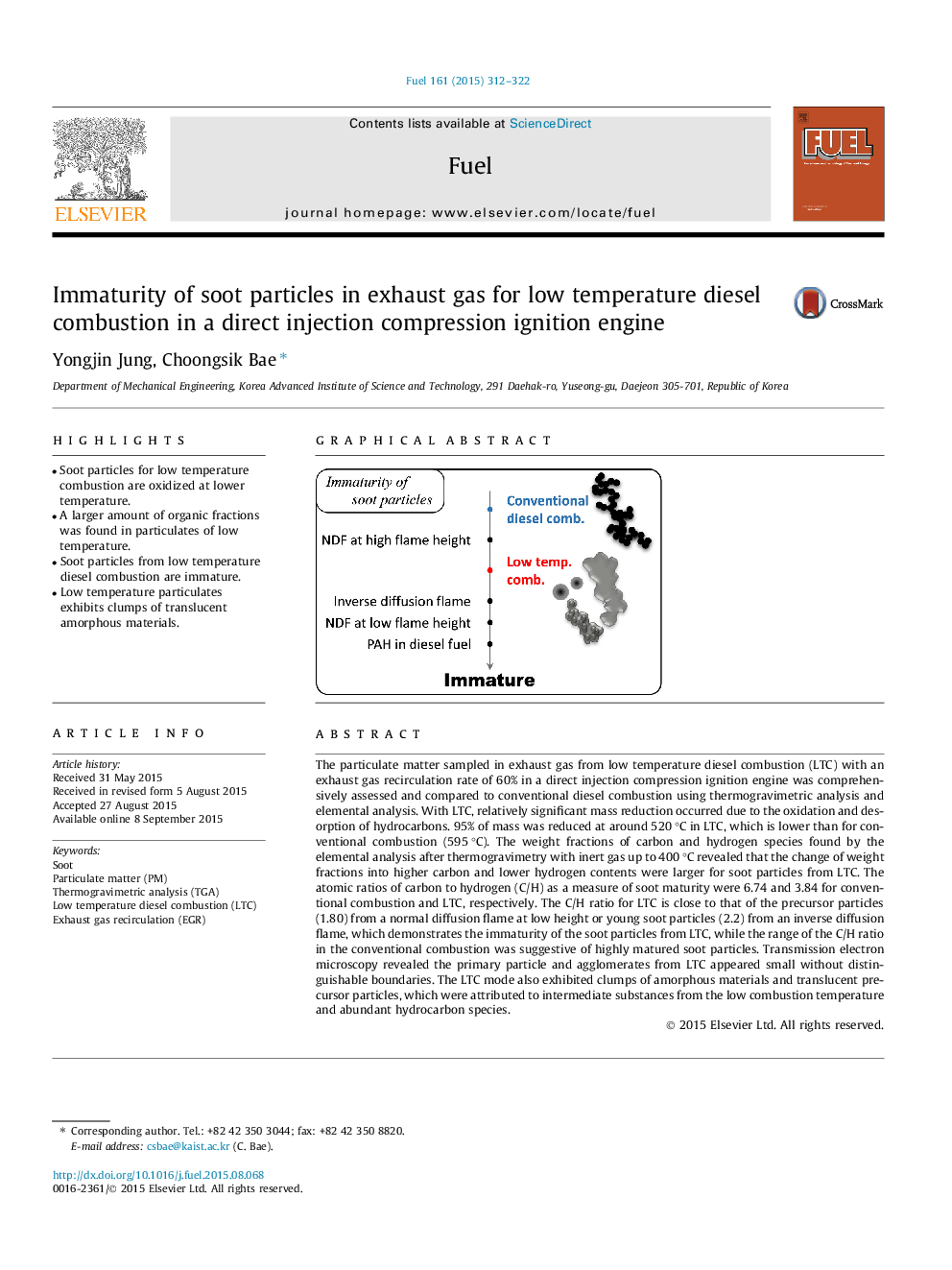| کد مقاله | کد نشریه | سال انتشار | مقاله انگلیسی | نسخه تمام متن |
|---|---|---|---|---|
| 205454 | 461109 | 2015 | 11 صفحه PDF | دانلود رایگان |
• Soot particles for low temperature combustion are oxidized at lower temperature.
• A larger amount of organic fractions was found in particulates of low temperature.
• Soot particles from low temperature diesel combustion are immature.
• Low temperature particulates exhibits clumps of translucent amorphous materials.
The particulate matter sampled in exhaust gas from low temperature diesel combustion (LTC) with an exhaust gas recirculation rate of 60% in a direct injection compression ignition engine was comprehensively assessed and compared to conventional diesel combustion using thermogravimetric analysis and elemental analysis. With LTC, relatively significant mass reduction occurred due to the oxidation and desorption of hydrocarbons. 95% of mass was reduced at around 520 °C in LTC, which is lower than for conventional combustion (595 °C). The weight fractions of carbon and hydrogen species found by the elemental analysis after thermogravimetry with inert gas up to 400 °C revealed that the change of weight fractions into higher carbon and lower hydrogen contents were larger for soot particles from LTC. The atomic ratios of carbon to hydrogen (C/H) as a measure of soot maturity were 6.74 and 3.84 for conventional combustion and LTC, respectively. The C/H ratio for LTC is close to that of the precursor particles (1.80) from a normal diffusion flame at low height or young soot particles (2.2) from an inverse diffusion flame, which demonstrates the immaturity of the soot particles from LTC, while the range of the C/H ratio in the conventional combustion was suggestive of highly matured soot particles. Transmission electron microscopy revealed the primary particle and agglomerates from LTC appeared small without distinguishable boundaries. The LTC mode also exhibited clumps of amorphous materials and translucent precursor particles, which were attributed to intermediate substances from the low combustion temperature and abundant hydrocarbon species.
Figure optionsDownload as PowerPoint slide
Journal: Fuel - Volume 161, 1 December 2015, Pages 312–322
